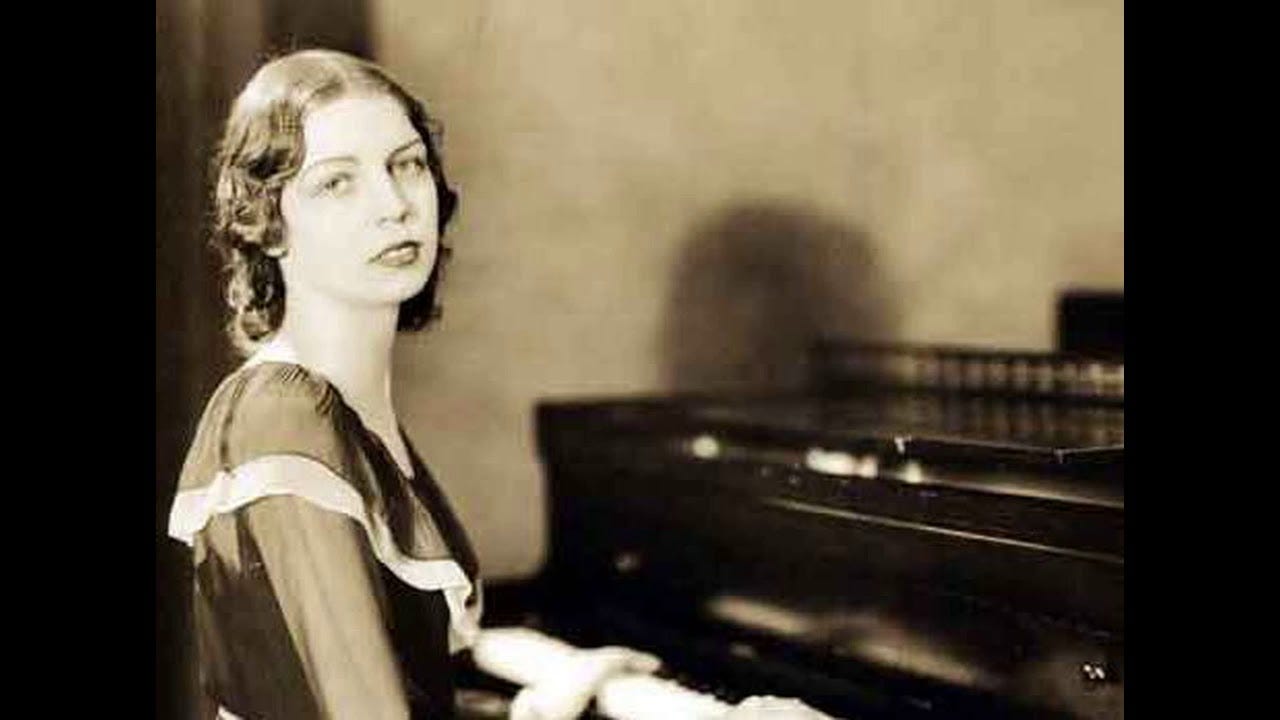
Suesse rhymes with lease, in case you’re wondering. Dubbed, “the girl Gershwin,” by the New York press in the thirties, Dana Suesse is yet another remarkable composer lost to history. You probably recognize this song:
Rudy Vallee and His Connecticut Yankees also recorded You Oughta Be In Pictures in 1934. His back-up chorus makes it sound like it was recorded in the land of Oz.
But Dana Suesse is so much more than this one wonderful tune. Suesse was born in Kansas City, Missouri in 1909. Too tall for dance, she started to learn the piano at a young age. Improvising came easy to her and as a child act on the vaudeville circuits of the midwest, could take a tune from the audience and make it her own on the piano. At the age of 17, Suesse and her mother moved to New York City in 1926.
Teaming up with lyricist Edward Heyman, they created quite a few hits, including the unforgettable You Oughta Be In Pictures. Here’s a great demo film of the two of them introducing themselves to movie executives. Ho Hum, the first song also became quite popular.
Many of her songs were made into piano rolls but there is only one piano roll with her playing piano, and it’s for a song she didn’t write! Recorded in 1931, Suesse played the piano for Sammy Fain and Joe Young’s song, Was That The Human Thing To Do?
Her 1937 song The Night Is Young And You’re So Beautiful made it to #5 on the Hit Parade.
Another hit was Yours For A Song from 1939.
We are lucky to have an album of Dana Suesse playing piano versions of her hit songs as well as her compositions she wrote just for the piano. She was such an excellent pianist!
And here is an excellent modern recording of even more of her excellent piano compositions, including the Cocktail Suite performed by Sara Davis Buechner.
While in New York, she studied piano with Alexander Siloti, a student of Liszt, and after WWII, she spent three years studying composition with Nadia Boulanger. In 1931, Paul Whiteman commissioned Suesse to write a piano concerto in the style of Gershwin’s Rhapsody in Blue. Her composition, Concerto in Three Rhythms was premiered November 4, 1932 in Carnegie Hall with Paul Whiteman conducting. It was orchestrated by Ferde Grofé.
In 1933 Suesse wrote the very evocative and Symphonic Waltzes for Piano and Orchestra. Here is a great recording with Suesse as soloist from 1935
In 1941 she wrote the incredibly daring Concerto for Two Pianos.
After her studies with Boulanger, one can hear a much more adventurous use of harmonies and her ideas for the orchestra are much more involved. Here is her excellent Jazz Concerto for Combo and Orchestra from 1955.
Until the end of her life in 1987, Suesse was actively creating. When she passed away, she was just finishing a musical, Mr. Sycamore, and was trying to get her straight play, Nemesis, optioned.
